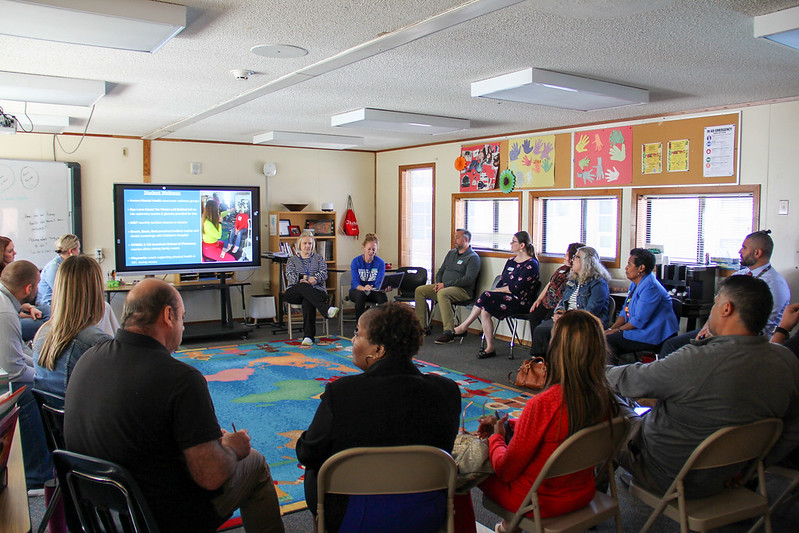You are here
District Level Leadership
District-level leadership for family, school, and community partnerships is crucial for ensuring a district's ongoing commitment to FSCP, and to help schools throughout the district strengthen their own sustainable FSCP programs. The following practices help district leaders identify ways to do just that. Note that each practice aligns to one or more of the Six Strategies for District Leaders. Those strategies are called out in italics.

District Level Leadership Practices
Review or guide the writing of district policy on FSCP.
Leadership Strategy: Align Program and Policy
- Include FSCP in your school board policy.
Conduct district-wide staff development on partnerships.
Leadership Strategy: Guide Learning and Program Development, Share Knowledge
Write a column on partnerships for the district newsletter.
Leadership Strategy: Create Awareness, Celebrate Milestones
- Example newsletter from D49
- Highlight celebrations.
Make presentations on partnerships.
Leadership Strategy: Create Awareness, Share Knowledge
Collect best practices from schools to share throughout the district.
Leadership Strategy: Create Awareness, Share Knowledge, Celebrate Milestones
- Collect your own Promising Partnership Practices and celebrate widely.
- Highlight schools that include FSCP in their UIP.
Conduct other district-level leadership activities on partnerships.
Leadership Strategy: Align Program and Policy, Create Awareness, Document Progress and Evaluate Outcomes
- Include FSCP in the district strategic plan (Example: Alamosa School District Strategic Plan).
- Form a district level team .
- Reframe FSCP.
- Include FSCP as an improvement strategy in district and school UIPs.
- Increase stakeholder engagement.
Direct Facilitation of Schools
Do you have a resource or example you'd like to share on how you implement District Level Leadership? Share them with Jes at stroope_j@cde.state.co.us.



Connect With Us





